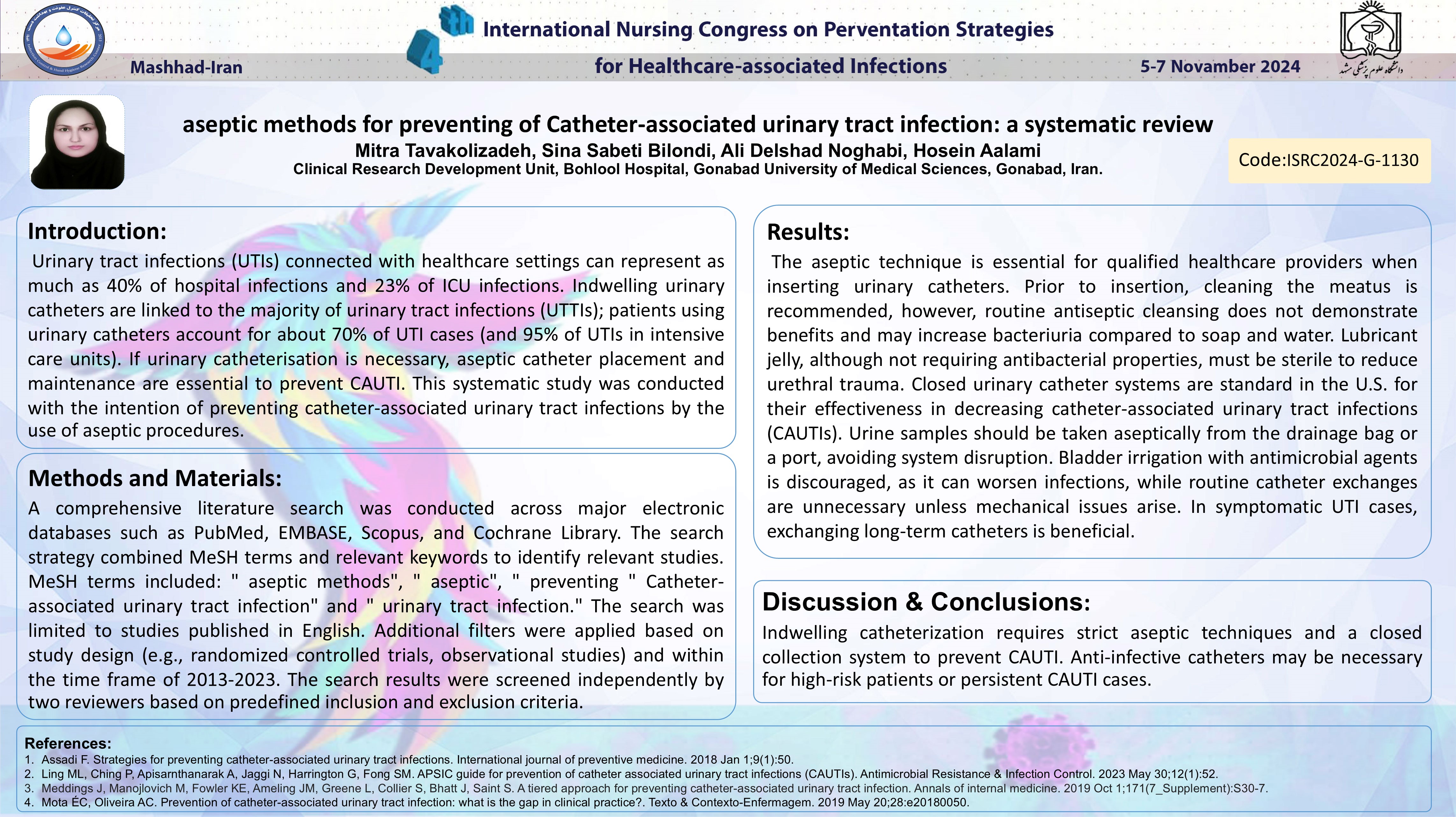روشهای آسپتیک برای پیشگیری از عفونت دستگاه ادراری مرتبط با کاتتر: یک مرور نظام مند
کد: G-1130
نویسندگان: Mitra Tavakolizadeh © ℗, Sina Sabeti Bilondi, Ali Delshad Noghabi , Hosein Aalami
زمان بندی: زمان بندی نشده!
دانلود: دانلود پوستر
خلاصه مقاله:
خلاصه مقاله
Introduction: Urinary tract infections (UTIs) connected with healthcare settings can represent as much as 40% of hospital infections and 23% of ICU infections. Indwelling urinary catheters are linked to the majority of urinary tract infections (UTTIs); patients using urinary catheters account for about 70% of UTI cases (and 95% of UTIs in intensive care units). If urinary catheterisation is necessary, aseptic catheter placement and maintenance are essential to prevent CAUTI. This systematic study was conducted with the intention of preventing catheter-associated urinary tract infections by the use of aseptic procedures. Search Strategy: A comprehensive literature search was conducted across major electronic databases such as PubMed, EMBASE, Scopus, and Cochrane Library. The search strategy combined MeSH terms and relevant keywords to identify relevant studies. MeSH terms included: " aseptic methods", " aseptic", " preventing " Catheter-associated urinary tract infection" and " urinary tract infection." The search was limited to studies published in English. Additional filters were applied based on study design (e.g., randomized controlled trials, observational studies) and within the time frame of 2013-2023. The search results were screened independently by two reviewers based on predefined inclusion and exclusion criteria. Results: The aseptic technique is essential for qualified healthcare providers when inserting urinary catheters. Prior to insertion, cleaning the meatus is recommended, however, routine antiseptic cleansing does not demonstrate benefits and may increase bacteriuria compared to soap and water. Lubricant jelly, although not requiring antibacterial properties, must be sterile to reduce urethral trauma. Closed urinary catheter systems are standard in the U.S. for their effectiveness in decreasing catheter-associated urinary tract infections (CAUTIs). Urine samples should be taken aseptically from the drainage bag or a port, avoiding system disruption. Bladder irrigation with antimicrobial agents is discouraged, as it can worsen infections, while routine catheter exchanges are unnecessary unless mechanical issues arise. In symptomatic UTI cases, exchanging long-term catheters is beneficial. Conclusions: Indwelling catheterization requires strict aseptic techniques and a closed collection system to prevent CAUTI. Anti-infective catheters may be necessary for high-risk patients or persistent CAUTI cases.
کلمات کلیدی
aseptic methods, preventing, Catheter-associated urinary tract infection (CAUTI), systematic review
